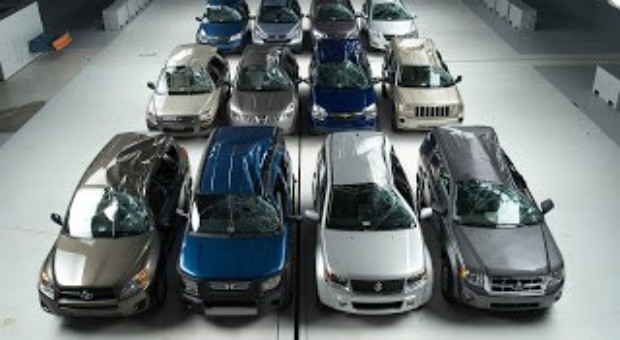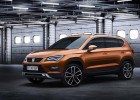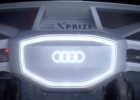
2011 safest cars list by Insurance Institute for Highway Safety
According to Insurance Institute for Highway Safety, for 2011 the safest car is the Buick LaCrosse for Large cars, Audi A3 ( MidSize cars ), Chevrolet Cruze (Small Cars).
66 WINNERS OF 2011 TOP SAFETY PICK AWARD
Sixty-six vehicles earn the Insurance Institute for Highway Safety’s TOP SAFETY PICK award for 2011 (list on p.2), including 40 cars, 25 SUVs, and a minivan.
TOP SAFETY PICK recognizes vehicles that do the best job of protecting people in front, side, rollover, and rear crashes based on good ratings in Institute tests. Winners also must have available electronic stability control, a crash avoidance feature that significantly reduces crash risk. The ratings help consumers pick vehicles that offer a higher level of protection than federal safety standards require.
10 NEW WINNERS FOR 2011
Large car: Mercedes E class coupe
Midsize cars: Kia Optima, Volkswagen Jetta sedan
Small cars: Chevrolet Cruze, Scion tC, Volkswagen GTI
Large SUV: Volkswagen Touareg
Midsize SUVs: Ford Explorer, Hyundai Santa Fe, Mercedes GLK
Front-runners: Hyundai/Kia and Volkswagen/Audi each have 9 winners for 2011. Next in line with 8 awards apiece are General Motors, Ford/Lincoln, and Toyota/Lexus/Scion. Subaru is the only manufacturer with a winner in all the vehicle classes in which it competes. Subaru earns 5 awards for 2011.
How vehicles are evaluated: The Institute’s frontal crashworthiness evaluations are based on results of 40 mph frontal offset crash tests.
Each vehicle’s overallevaluation is based on measurements of intrusion into the occupant compartment, injury measures recorded on a 50th percentile male Hybrid III dummy in the driver seat, and analysis of slow-motion film to assess how well the restraint system controlled dummy movement during the test.
Side evaluations are based on performance in a crash test in which the side of a vehicle is struck by a barrier moving at 31 mph. The barrier represents the front end of a pickup or SUV. Ratings reflect injury measures recorded on 2 instrumented SID-IIs dummies representing a 5th percentile woman, assessment of head protection countermeasures, and the vehicle’s structural performance
during the impact.
In the roof strength test, a metal plate is pushed against 1 side of a roof at a displacement rate of 0.2 inch per second. To earn a good rating for rollover protection, the roof must withstand a force of 4 times the vehicle’s weight before reaching 5 inches of crush.
This is called a strength-to-weight ratio.
Rear crash protection is rated according to a two-step procedure. Starting points for the ratings are measurements of head restraint geometry — the height of a restraint and its horizontal distance behind the back of the head of an average-size man.
Seat/head restraints with good or acceptable geometry are tested dynamically using a dummy that measures forces on the neck. This test simulates a collisionin which a stationary vehicle is struck in the rear at 20 mph.
Seats without good or acceptable geometry are rated poor overall because they can’t be positioned to protect many people.
Read more here, please.





















